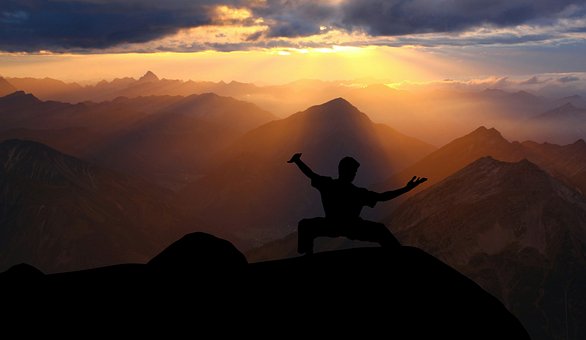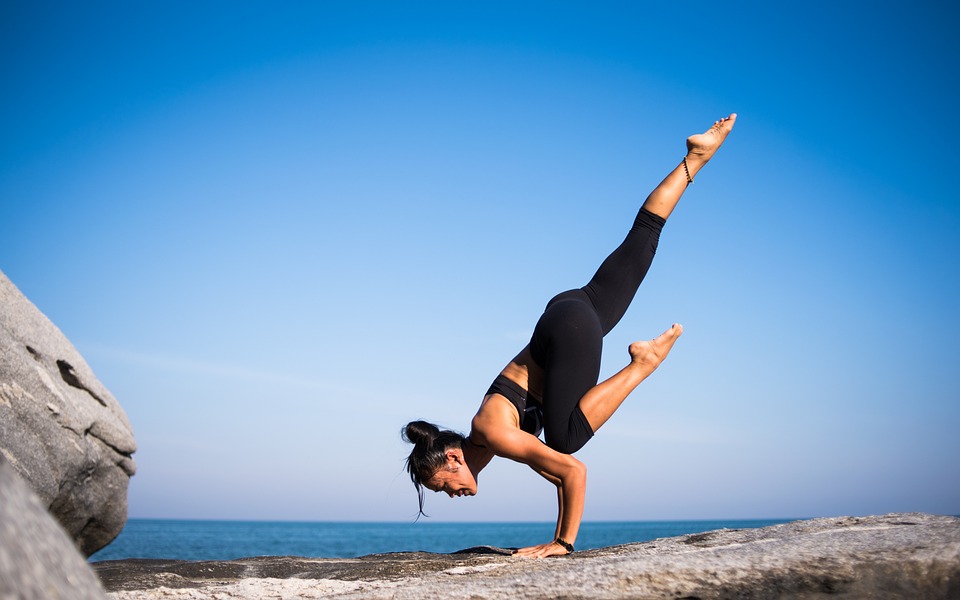
You can ease stress with simple relaxation techniques. Try breathing exercises like box breathing or the 4-7-8 technique to calm your mind. Progressive muscle relaxation helps by tensing and releasing muscle groups from head to toe. Practice mindfulness by focusing on your breath or employing body scan meditation. Engage in physical activity like yoga or tai chi to enhance both physical and mental well-being. Sensory relaxation with calming sounds, aromatherapy, or a cozy weighted blanket can also soothe stress. These strategies pave the way for tranquility, and uncovering additional tips can further deepen your stress relief.
Breathing Techniques
Breathing techniques stand as a powerful tool for stress relief and relaxation. When life’s demands press in, embracing the liberating power of breath awareness can transform your experience. By focusing on the rhythm of your breath, you can tap into a natural state of calm and clarity. Consider the Box Breath Technique, where you exhale completely and count to four, hold your breath, and inhale deeply, each for four counts. This rhythmic breathing routine not only eases stress but also centers your mind. Try at least four rounds and adjust if you feel light-headed.
Deepen your practice with Belly Breathing. Place a hand on your belly and another on your chest. Inhale through your nose, drawing air into your belly, and sense the gentle rising; exhale, feeling it fall. Such breath awareness nurtures a profound tranquility within you. Mindfulness exercises, when integrated into these techniques, can further elevate your mood and reduce negative sentiments. If the techniques feel insufficient, remember that therapy is an option where breathing strategies can be discussed further.
For brief yet effective relaxation, the 4-7-8 technique can also work wonders. Inhale and hold, then exhale longer, using rhythmic breathing to dissolve tension.
Muscle Relaxation
Muscle relaxation techniques offer an effective way to reduce stress and promote overall well-being. By mastering this skill, you take control of your body’s tension and embrace the freedom that arises from stress relief. Start by settling into a comfortable position, either sitting or lying down, in a tranquil area. Consider closing your eyes to better connect with your body’s sensations. Focus on specific muscle groups, such as your feet or face, working systematically through your body. Inhale deeply as you tense each group for about 5-10 seconds, savoring the sensation of contraction. Then, release that tension suddenly while exhaling, noting the newfound calm. Multiple studies suggest progressive muscle relaxation practices are effective for reducing symptoms of conditions like tension headaches and insomnia. Remember, synchronized breathing is your ally—inhale with tension, exhale with tension release. Mercy on your body is crucial, as insufficient recovery increases the risk of injury, affecting both physical and mental well-being. Explore this practice by tensing muscle groups like your fists, biceps, or jaw, one at a time or on both sides simultaneously. Each repetition enhances your ability to distinguish between tension and relaxation. Reap the benefits—reduced stress, increased self-control, and improved sleep quality. Don’t forget to whisper “RELAX” as you let go, reinforcing the liberation that comes from banishing stress. Immerse yourself in muscle relaxation and embrace the serenity it delivers.
Mindfulness Practices

As you embrace muscle relaxation and its soothing benefits, consider incorporating mindfulness practices to further deepen your sense of calm. Mindful breathing exercises can be your gateway to a serene mind.
Try focusing solely on your breath, using meditation apps or guided sessions to find your footing. Cyclic sighing—inhale for four seconds, hold for six, exhale for seven—activates the parasympathetic nervous system. This not only reduces your heart rate and blood pressure but wraps you in a cocoon of peace.
Explore mindful awareness with a body scan meditation. Gently direct attention to various body parts, noting sensations without judgment. This practice helps you step out of autopilot, grounding you in the present.
It’s about engaging your senses, noticing sounds, and embracing the nuances of your environment. Mindfulness isn’t confined to the mat; integrate it into daily life through mindful journaling. Document your thoughts and feelings without filters, achieving clarity and an anchored presence in the now.
Therapeutic mindfulness interventions like MBSR or MBCT are also beneficial. These bring relief from stress, anxiety, and depression, while bolstering your physical and mental health.
Regular practice of meditation improves the ability to enter a meditative state, aiding stress reduction and enhancing mental clarity.
Embrace mindfulness and rediscover freedom in each moment.
Physical Activities
Ever wondered how physical activities can act as a powerful antidote to stress? Engaging in activities like yoga and tai chi can profoundly impact both your body and mind, helping you achieve a sense of peace and balance. Yoga benefits are extensive; with poses like Child’s Pose or Cat-Cow Stretch, you can enhance flexibility and calm your thoughts. It’s an adaptable practice, open to all abilities, boosting mental health by reducing stress.
Tai chi offers another path to serenity, combining slow, deliberate movements with deep breathing. Practicing tai chi improves balance and mental focus, lowering stress levels remarkably. Its gentle movements not only lower blood pressure but also promote relaxation. As a fluid martial art, tai chi offers liberation from the stresses of daily life. Even short bursts of physical activity can lead to immediate stress relief and enhance sleep quality.
Consider this easy guide:
| Activity | Benefits | Adaptability |
|---|---|---|
| Yoga | Flexibility, Calm Mind | Suitable for All |
| Tai Chi | Balance, Mental Focus | Adaptable to Chairs |
| Exercise | Better Mood, Sleep | Tailored Preferences |
Taking time for these activities isn’t just about fitness—it’s about nurturing a liberated and stress-free lifestyle. Whether through yoga, tai chi, or any form of exercise, you’re investing in your well-being.
Sensory Relaxation

While physical activities like yoga and tai chi offer significant stress relief, sensory relaxation provides another effective approach to achieving tranquility. Imagine wrapping yourself in a weighted blanket, experiencing deep pressure to help soothe your senses. Compression clothing or even a gentle massage can regulate your sensory system.
Immerse yourself in sensory calming by playing with stress-relief toys like putty or kinetic sand, releasing the free spirit within you.
Optimize your surroundings through mindful environmental adjustments to create sensory-friendly environments. The subtle beauty of nature scenes or the calm of soft color palettes envelop you in peace. Watch the rhythmic dance of lava lamps or bubble lamps, letting these visual soothers ease tension. Reduce bright lights to avoid overload, transforming your space into a sanctuary of serenity.
Layer your relaxation with calming sounds and music. Instrumental tracks, nature sounds, and the grounding hum of brown noise can melt stress away. Coupling these with aromatic scents, using essential oils or candles, enhances the experience.
Warm baths infused with Epsom salts or a hands-on activity like gardening embed you in sensory grounding. Embrace these approaches, liberating your mind to a new state of tranquility. Regular mindfulness practices enhance emotional awareness and can further reduce overall stress, contributing to improved physical health.













